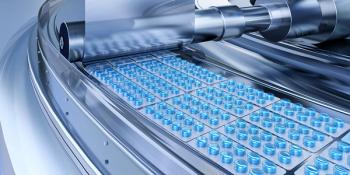
- Pharmaceutical Technology-03-02-2014
- Volume 38
- Issue 3
Eight Trends to Watch in 2014
Trends driving pharmaceutical packaging include product protection, productivity boosters, and patient adherence improvement.
Eight trends driving pharmaceutical packaging in 2014 can be encompassed in three broader categories. Product-protection trends include rising demand for anticounterfeiting tools, traceability technology, barrier containers, cold-chain maintenance practices, and quality-assurance equipment. Productivity boosters emphasize downtime reduction and include adoption of modular components and single-use product-contact parts. Patient adherence is aided by compliance packaging designs and easy-to-use, self-dosing devices like auto-injectors.
Protecting productsAnticounterfeiting and traceability. Despite some victories in the war against counterfeit products, counterfeit pharmaceuticals continue to pose a hazard for patients. Orders from online pharmacies are especially risky, but no product is safe from counterfeiting. During 2013, for example, counterfeit Botox (1) and Lamisil (2), an antifungal antibiotic, were discovered in the marketplace.
Under the new European Union Anti-Falsification Directive, virtually all prescription medicines must carry a unique code number plus a feature showing that the outer package has not been tampered with. These requirements take effect in 2017 (3). In the United States, the Drug Quality and Security Act (H.R. 3204), signed into law by President Obama on Nov. 27, 2013, establishes similar serialization requirements and outlines data collection and sharing responsibilities for drug manufacturers, wholesale distributors, dispensers, and repackagers. The unique item-level code makes it possible to trace each package through the supply chain from manufacturer to consumer and enables quick authentication.
Packaging suppliers are preparing to meet these requirements. For example, August Faller, a Germany-based manufacturer of secondary packaging for pharmaceuticals, has developed barcodes and alphanumeric and DataMatrix codes for folded boxes and labels for the serial coding of packaging materials. An inkjet coder applies the serialized information.
An umbrella organization for five German medicinal product-distribution associations, securPharm, relies on the two-dimensional DataMatrix code. Manufacturers print a DataMatrix code containing a unique number to make each package “one of a kind.” All assigned numbers are stored in a shared manufacturer database. At the pharmacy, each package code is scanned and checked against the database before the medicine is given to the patient, thus allowing quick identification of counterfeit products. This system passed a practical test involving 280 participating pharmacies, 24 cooperating pharmaceutical companies, more than 3.5 million serialized packages, and more than 30,000 authentications. “With newly coded packages of selected drugs, we achieved system accessibility 99.5% of the time,” reported Reinhard Hoferichter, spokesman for the securPharm Executive Board (3).
Machinery manufacturers also support traceability initiatives. For example, Marchesini Group, an automation specialist headquartered in Italy with US offices in New Jersey, has developed a track-and-trace solution with a module capable of applying codes on both sides and the top of folding cartons at the rate of 400 cartons per minute. A camera then checks and verifies the codes. The data are stored in a central server for retrieval at any time for quick product authentication (3).
Barrier containers. Product quality also depends on compatibility of the product and container. Biopharmaceuticals, which are currently experiencing double-digit sales increases and forecasted for continuing growth during the next decade, can present challenges to conventional packaging. Some biomolecules readily decompose, and others are highly aggressive and attack the surfaces of the primary package, spurring interest in containers with improved barrier properties and enhanced impact resistance (3).
To provide the barrier properties needed by biopharmaceuticals, Schott has developed glass vials with a thin lining of silicon dioxide on the inside. In a chemical vapor deposition process, a precursor gas reacts with oxygen at high temperatures and deposits silicon molecules on the glass wall. “The silicon layer prevents protein interactions with the package surface and protein adsorption—sensitive biopharmaceuticals thus stay stable,” explained Christina Rettig, spokesperson for Schott (3).
Multilayer plastic bottles are another alternative for biopharmaceuticals requiring barrier protection. Some polyolefins are as transparent as glass but protect better because their surface cannot be attacked by alkaline liquid medicines. These polymers, however, are relatively expensive (3).
Schott’s TopPac series of prefillable syringes is made from cyclo-olefin copolymer (COC). Sizes range from 1-50 mL and include 10-, 20-, and 50-mL large-volume syringes for intensive care applications. The latter sizes are compatible with syringe pumps for infusion therapy.
Multilayer plastic containers, such as the Gx MultiShell vial from Gerresheimer, offer higher barrier properties for parenteral drugs with alkaline pH ranges as well as potent pharmaceuticals. Uniting the best properties of plastic and glass, the cyclic olefin polymer (COP)/polyamide/COP structure shown in Figure 1 does not interact with alkaline liquids, leaches virtually no organic substances, and is more break-resistant than the equivalent glass container. Gerresheimer also offers ClearJect COP syringes. The heavy metal-free COP is particularly well-suited for sensitive oncology and ophthalmology medications.
Cold-chain. Because many biopharmaceuticals need to be maintained at certain temperatures to protect quality and efficacy, growth in this market segment is also generating demand for cold-chain products and technologies. As a result, logistics providers, such as UPS, and contract supply-chain service providers, such as BioConvergence, are expanding services to ensure that temperature-sensitive products are maintained within the specified temperature range for the duration of their travels.
Suppliers of temperature-controlled packaging and data loggers are equally active in the development of products, which maintain required temperatures longer and are easier to use. To simplify transition to thermal packaging, some suppliers have developed prequalified systems. Cold Chain Technologies (CCT), for example, has developed a range of prequalified shipping systems for both parcel and bulk applications. The KoolTemp GTS Rx, Express, Excel, Extreme, and Evolution shipping systems offer simple loading and conditioning and modular designs with common refrigerants. Created with the aid of CCT’s KoolDesigns Thermal Modeling software and powered by its proprietary Koolit Advanced PCM phase-change material, KoolTemp GTS shipping systems include refrigerated, frozen, and controlled-room-temperature options and a variety of sizes that range from 4-52-L small parcels to half- and full-pallet bulk shippers.
Quality assurance. A rising level of recalls and a changing regulatory landscape are stimulating attention on quality assurance/control. Visual inspection is increasingly automated, as discussed in an interview with John Shabushnig, principal consultant at Insight Pharma Consulting, in another article in this issue. Machinery builders are automating other inspection functions too. During processing and packaging of pharmaceuticals, 100% in-process checks are often necessary, as it is essential to ensure that precisely the right proportion of active substance is contained in each vial, syringe, or carpule. To maintain filling precision, Bausch + Ströbel has worked with sensor specialist visiotec to develop a process that continuously controls filling without impacting output. Instead of removing vials for inspection, online sensors check the fill without slowing the line (3).
Improving productivity
The ability to inspect online at line speeds dovetails with the ever-present need to maximize productivity with strategies such as reducing changeover time. Bausch + Ströbel, for example, designs machines to minimize downtime related to changeover. A fully automated labeler, capable of labeling up to 350 bottles per minute, permits reel changes without stopping the machine (3).
Changeover time also shrinks with the adoption of single-use product-contact parts because components that ordinarily would require cleaning are simply removed and replaced. A number of companies supply single-use, disposable systems including Bosch Packaging, Colanar, Cozzoli, and Flexicon A/S. Flexicon’s asepticsu sterile, single-use fluid path works in conjunction with its peristaltic filling technology to deliver precise filling accuracy with rapid product changeover. The single-use system also minimizes risk of cross-contamination and simplifies validation. Gamma-sterilized components arrive double-bagged and ready for use.
Improving patient adherence
Better patient adherence is one way to address pressures to reduce healthcare costs and improve outcomes. It can be challenging, however, to deliver the correct dose of medication at the correct time. Compliance packaging designs can help consumers take their medication properly. Self-dosing devices, such as autoinjectors, shift medication delivery to the consumer’s location from more expensive, labor-intensive settings like a doctor’s office.
Designs feature built-in safety features, such as dose monitors and safety needles, which retract immediately after injection to prevent accidental needlesticks.
The packages of the future will be even more versatile. The Finnish-Swedish packaging manufacturer Stora Enso and Göteborg’s Chalmers University of Technology, for example, are developing an intelligent package designed to simplify communication between patients and doctors. The package records precisely when a tablet is removed. If the doctor’s prescription is not observed, the patient receives a wireless reminder, which can be sent to a mobile phone, for example (3).
References
1. The Counterfeit Report, “
2. The Counterfeit Report, “
3. Messe Dusseldorf, “New Pharmaceuticals Packages Protect Proteins and Prevent Counterfeiting,” Interpack 2014: Technical Article No. 1 (Nov. 2013).
About the Author
Hallie Forcinio is Pharmaceutical Technology's Packaging Forum editor, 4708 Morningside Drive, Cleveland OH 44109, tel. 216.351.5824, fax. 216.351.5684,
Articles in this issue
almost 12 years ago
Under New Ownershipalmost 12 years ago
Current issues with nanomedicinesalmost 12 years ago
Optimizing Solid Dosage Manufacturingalmost 12 years ago
European Union Packaging Safety Features Come into Effectalmost 12 years ago
Comparing Drug Layering and Direct Pelletization Processesalmost 12 years ago
7900 ICP-MS Increases Efficiencyalmost 12 years ago
Regulators Get Tough on Corruption in Chinaalmost 12 years ago
Best Practices in Adopting Single-Use Systemsalmost 12 years ago
A New Approach to Forced Degradation Studies Using Anhydrous Conditionsalmost 12 years ago
Manufacturers Struggle with Breakthrough Drug DevelopmentNewsletter
Get the essential updates shaping the future of pharma manufacturing and compliance—subscribe today to Pharmaceutical Technology and never miss a breakthrough.




